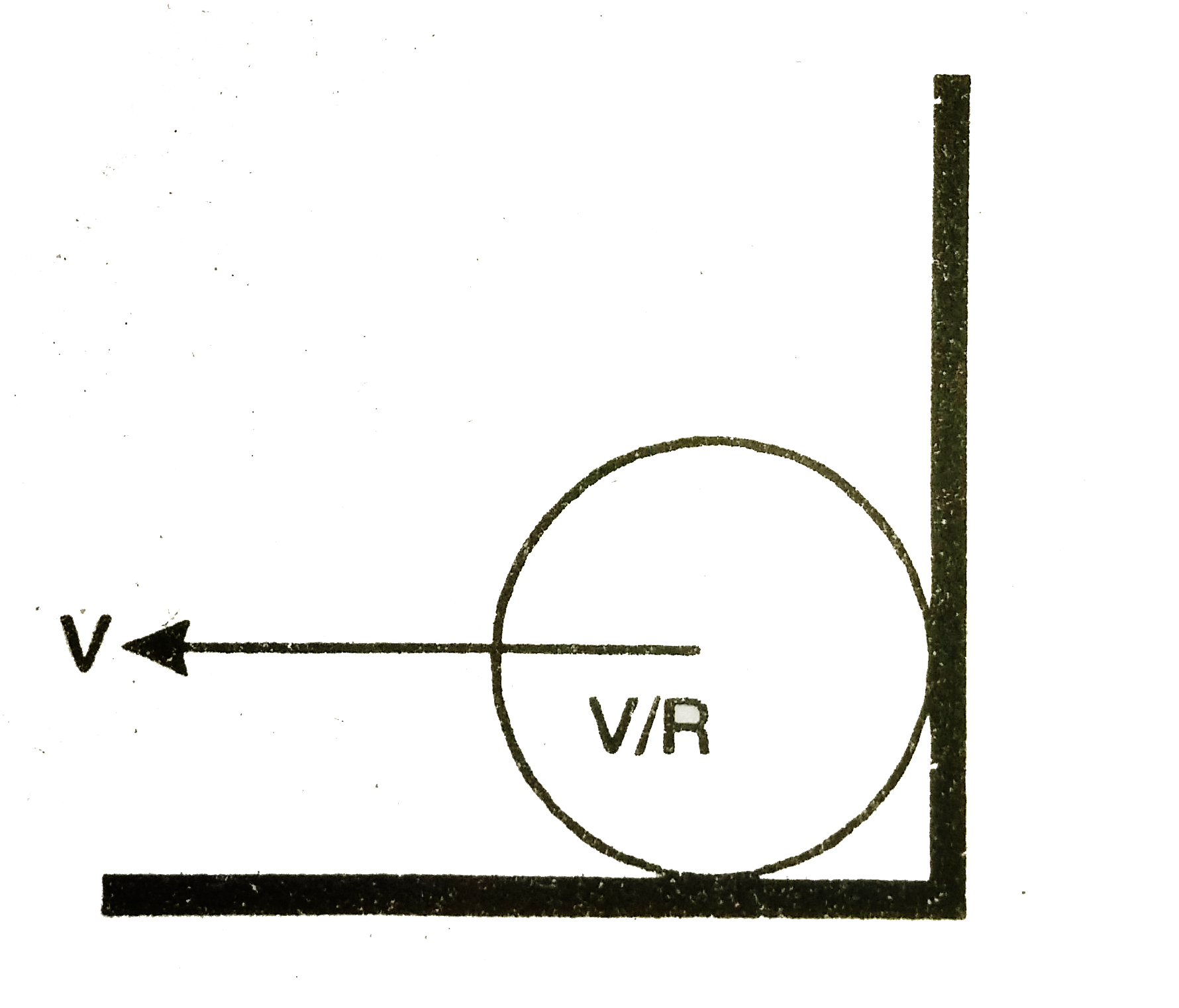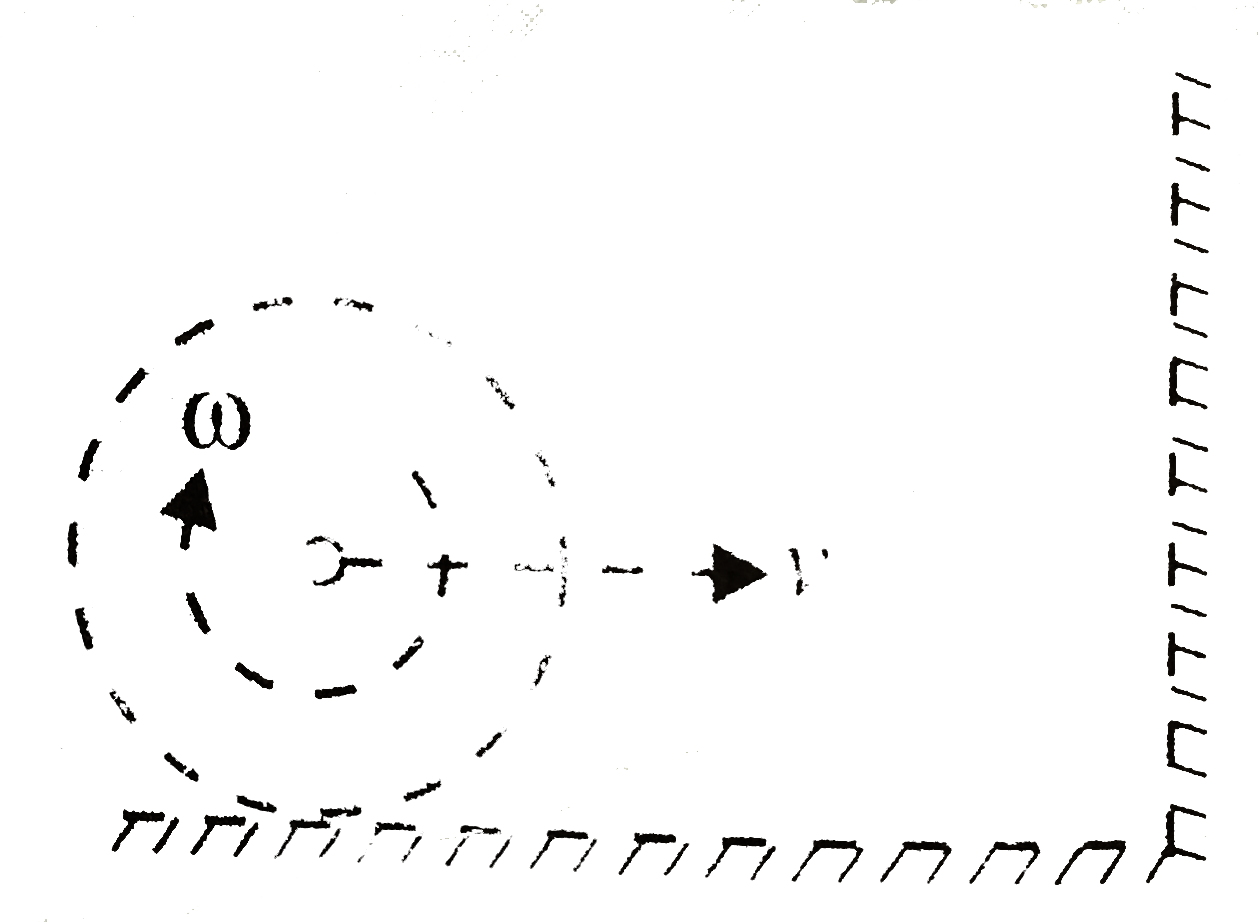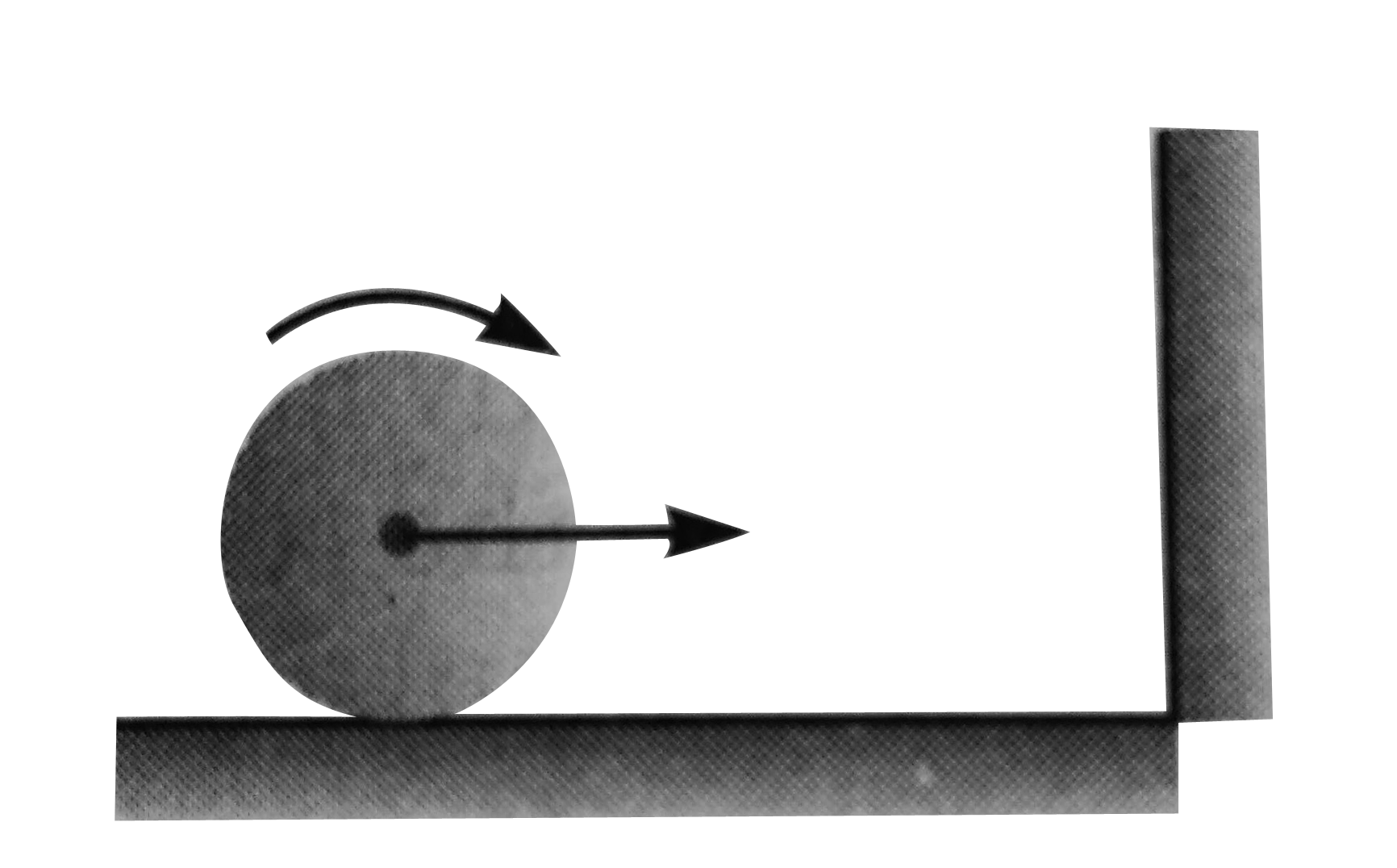A solid sphere rolling on a rough horizontal surface with a linear speed v collides elastically with a fixed, smooth, vertical wall. Find the speed of the sphere after it has started pure rolling in the backward direction.
The correct Answer is:C
When the solid sphere collides with the wall, the rebounds with velocity v towards left but it continues to rotate in the clockwise direction.
So, the angular momentum
−mvR−(25)mR×vR
After rebounding when pure roling starts lrt the velocity be v and the corresponding angular velocity is (v'R)

So, mvR−(25)mR=mvR+mR(v'R)
mvRx(x(35)=mvR=(75)
v'=3v7
So the sphere will move with velocity (3v)/7.
Topper's Solved these Questions
- BOOK - HC VERMACHAPTER - ROTATIONAL MECHANICSEXERCISE - Objective 215videos
ROTATIONAL MECHANICS
- BOOK - HC VERMACHAPTER - REST AND MOTION : KINEMATICSEXERCISE - Exercises51videos
REST AND MOTION : KINEMATICS
- BOOK - HC VERMACHAPTER - SIMPLE HARMONIC MOTIONEXERCISE - Exercises58videos
SIMPLE HARMONIC MOTION
Similar Questions
A sphere rolls on a horizontal surface. Is there any point of the sphere which has a vertical velocity?
View SolutionA solid sphere of radius 2.45m is rotating with an angular speed of 10rad/s. When this rotating sphere is placed on a rough horizontal surface then after sometime it starts pure rolling. Find the linear speed of the sphere after it starts pure rolling.
View Solution
Knowledge Check
- Question 1 - Select One
A solid sphere rolls without slipping on a rough horizontal floor, moving with a speed v. It makes an elastic collision with a smooth vertical wall. After impact
Ait will move with a speed v initiallBits motion will be rolling with slipping initially and its rotational motion will stop momentarily at some instant.Cits motion will be rolling without slipping only after some timeDall of the above. - Question 2 - Select One or More
A solid sphere rolls without slipping on a rough horizontal floor, moving with a speed v. It makes an elastic collision with a smooth vertical wall. After impact
Ait will move with a speed v initiallyBits motion will be rolling without slippingCits motion will be roilling without slipping initially and its rotational motion will stop momentarily at some instantDits motion will be rolling without slipping only after some time - Question 3 - Select One
A solid sphere rolling on a rough horizontal surface. Acceleration of contact point is zero.
A solid sphere can roll on the smooth surface.AStatement-1 is True, Statement-2 is Ture , Statement -2 is a correct explanation for statement -1.BStatement-1 is True, Statement-2 is True , Statement-2 is NOT a correct explanation fro Statement -1.CStatement-1 is True, Statement-2 is False.DStatement-1 is False, Statement-2 is True.
A sphere rolling on a horizontal rough surface Collides elastically with a smooth vertical wall, as shown in Fig. State which of the following statements is true or false.
 a. After collision, the velocity of the centre of mass gets reversed.
a. After collision, the velocity of the centre of mass gets reversed.
b. Angular momentum of the sphere about the point of contact with the wall is conserved.
c. Angular momentum of the sphere about a stationary point on the horizontal surface is conserved.
d. Just after collision the point of contact with the horizontal surface is moving towards the wall.
e. After collision the friction force acts on the sphere such that it decreases the linear speed and increases the angular speed.
f. Finally, when the sphere starts rolling, it is moving away from the wall.View Solution
A solid sphere is rolling purely on a rough horizontal surface (coefficient of kinetic friction =μ) with speed of centre =u. It collides in-elastically with a smooth vertical wall at a certain moment, the coefficient of restituting being 12. The sphere will begin pure rolling after a time.View SolutionA solid sphere is rolled on a rough surface and it is found that sphere stops after some time.
View SolutionA cylinder rolls without slipping on a rough floor, moving with a spped v. It makes an elastic collision with smooth vertical wall. After impact
View SolutionA uniform solid sphere rolls on a horizontal surface at 20 m/s. It, then, rolls up a plane inclined at
View Solution

